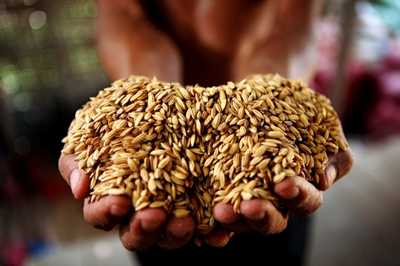OZONE APPLICATION FIELDS
Food Processing
Ozone applied in food processing

Food Processing
Food Processing
Related Products: http://www.o3tech.cn/product/tap-water-ozonator-120mg.html
Ozone has enjoyed a long history of use and is known as a broad-spectrum biocide against viruses, bacteria, bio films, fungi and protozoa— none of which can build up are sistive tolerance to ozone, because ozone disinfects by oxidation processes.Ozone does not act as a systemic poison to micro organisms, but rather, destroys them by oxidation. Consequently, it is impossible for a microorganism to build up any resistance to oxidation. Today,ozone technology is beginning to be used effectively as an additional point of intervention in the food and beverage industry.
1).Cold Storage
Utilization of the properties makes ozone eminently suitable for increasing the storage life of perishable foods in refrigerated premises. At the same time it's use iseconomic as the investment and operational costs of the equipment are on a acceptable level in relation to the size of refrigerated rooms. Its application eliminatesthe risk of leaving the unpleasant odor or other traces of antiseptics used for preservation on food stuffs.
Utilization of ozone for increasing the storage life of food, particularly if held at low temperatures,is believed to have started in 1909 when, in the cold storage plant of cologne,the reduction in the germ count on the surface of meat stored there was observed after an ozone generator had been installed in the duct of fresh air used to ventilate the storage room.
Practical operations for preservation start with the sterilization of air in such a way that air entering the storage room contains a sufficient amount of ozone to destroy microorganisms. At the same time, however, ozone decomposition to a significant extent is to be expected due to the high moisture content required,the walls of the storage room, the packaging materials, the absorption effect of the stored goods, and also to the oxidation reactions taking place.
These two requirements demand the most perfect distribution of ozonized air in the storage room and make it imperative that the capacity of the ozone generator ensures the maintenance of the appropriate ozone concentration through out the whole mass of air.This is an application need.
During storage, ozone exerts a three fold effect by destroying the micro-organisms, oxidizing the odors and affecting the processes of metabolism.
It's primary action on molds is to suppress there growth and this effect can set in rapidly, particularly in the initial stage on a mold free surface. Afterwards this process leads to the destruction of cultures already formed. Ozone attacks immediately the easily accessible cells on the surface since ozone exerts a surface effect in the first place and has a only slight depth of penetration.
Ozonization applied for the storage of refrigerated meat destroys surface microorganisms, particularly the family of Pseudomonas responsible for spoilage.
Increasing the moisture content of the environment favorably influences the germicidal effect.This is brought about by the swelling of microbes making them more susceptible to destruction. Experiments conducted with beef showed that ozone is most efficient if the surface has a definite moisture content of around 60%.
Preliminary treatment:
Put the fruits and vegetable in the ozonated water after picking to remove bacteria and pesticide residues on fruit skin.3 mg/l The concentration of ozone water requirements: 3 mg/l
1#: Ozone in the refrigerator sterilization,preservation, anti - mildew is divided into three stages: the empty storage sterilization, disinfection, sterilization after fruits and vegetable put in the cold storage;
Empty storage sterilization: to make the ozone generator unit keep working for 3-6 days (ozone concentration 5-10ppm);Stop working 1-2 days before fruits and vegetable put in.
2#: Generally, it need around concentration 5.0 PPM when used on cold storage room. Usually, install ozone generator unit outside the cold storageroom (close to the cold storage room; since it will affect the working life when the ozone generator long working under the higher relative humiditycondition), and go through room top to the inside cold storage room(ozone gas is more heavy than air);
3#: There is one formula to calculate the ozone dosage when used on cold storage room.
Such as: One cold storage volume ofV=500M3, in order to ensure the sterilizing refrigerator, a concentration required for 5PPM. ozone dosage will be 12.68;
W=5 x 2.14 x500/[(1-0.5728)/1000]=12.68 (Grams/H);
The harvest may well be finished, but the yield is far from secured. The grain is often stored for many months, during which time armies of hungry insects can cause great damage to the stocks.
2).Grain Depot

The harvest may well be finished, but the yield is far from secured. The grain is often stored for many months, during which time armies of hungry insects can cause great damage to the stocks.
Insects responsible for heavy losses
The battle against insects such as grain weevils, rice flour beetles and several species of moth is important because they incur heavy losses to food producers, despite their innocuous size.
In fact, in industrialised countries losses make up as much as 9 percent of the stored grain. In developing countries the losses can be even greater – around 20 percent and in some cases all the way up to 100 percent.
But in addition to causing financial losses, the insects also pose a health risk when the grain is used in foods.
Insecticides cannot fight off all insects
The problem with traditional insecticides and fumigation agents is that they do not always get rid of all stages of the insects.
In some insect species, including the most economically valuable ones such as the grain weevil, the adults live freely among the kernels, while eggs, larvae and pupae live concealed inside the kernels.
When grain is in storage, insects can do great damage. In some developing countries, up to 100 percent of the crop will be lost due to insect attacts. (Photo: Colourbox)
“It isn’t until they gnaw their way out of the kernels as adults that traditional insecticides have an effect on them.”
Researchers have therefore been searching long and hard for more effective alternatives for combating these parasites – partly also because the insects have gradually become resistant to many of the active ingredients in the insecticides, and because some insecticides have been disallowed for environmental reasons.
Ozone has many environmental and health-related benefits
Ozone is an unstable gas which rapidly decays into oxygen and becomes harmless. By itself, it is a very hazardous gas, but the use of ozone doesn’t seem to have any bad effects on neither the grain nor the environment, plus it leaves no residue in the grain afterwards.
But one must of course ensure that ozone is only used in suitable conditions, for instance in gas-tight silos or grain stores under sealed tarpaulins, so that people don’t come into contact with the gas before it has decayed.
Another advantage with ozone is that it can be produced in sit by means of an electric high-voltage process and a special machine.
That way you avoid having to transport toxic pesticides or fumigation agents to the cereal stocks like they do today.





